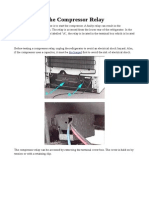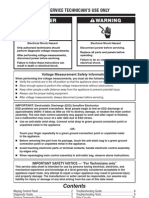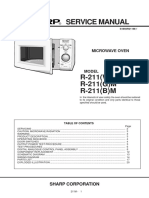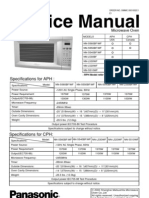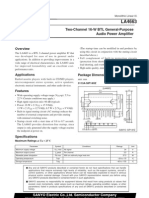0% found this document useful (1 vote)
3K views3 pagesTesting A Triac
This document provides instructions for testing a triac, an electronic switch commonly used in appliances like microwaves. It describes two testing procedures that can be performed with a digital multimeter. The first procedure involves measuring resistance between the triac's terminals and checking for continuity. The second tests the triac's ability to turn on by applying a momentary short between terminals. Safety precautions for working with high voltage components are also outlined, including discharging any capacitors before testing.
Uploaded by
tenisonCopyright
© Attribution Non-Commercial (BY-NC)
We take content rights seriously. If you suspect this is your content, claim it here.
Available Formats
Download as DOCX, PDF, TXT or read online on Scribd
0% found this document useful (1 vote)
3K views3 pagesTesting A Triac
This document provides instructions for testing a triac, an electronic switch commonly used in appliances like microwaves. It describes two testing procedures that can be performed with a digital multimeter. The first procedure involves measuring resistance between the triac's terminals and checking for continuity. The second tests the triac's ability to turn on by applying a momentary short between terminals. Safety precautions for working with high voltage components are also outlined, including discharging any capacitors before testing.
Uploaded by
tenisonCopyright
© Attribution Non-Commercial (BY-NC)
We take content rights seriously. If you suspect this is your content, claim it here.
Available Formats
Download as DOCX, PDF, TXT or read online on Scribd
/ 3
















